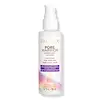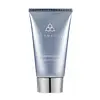What's inside
What's inside
 Key Ingredients
Key Ingredients

 Benefits
Benefits

 Concerns
Concerns

 Ingredients Side-by-side
Ingredients Side-by-side

Water
Skin ConditioningAloe Barbadensis Leaf Juice
Skin ConditioningGlycerin
HumectantCetyl Alcohol
EmollientDicaprylyl Carbonate
EmollientGlyceryl Stearate Citrate
EmollientCoconut Alkanes
EmollientCoco-Caprylate/Caprate
EmollientStearic Acid
CleansingStearyl Alcohol
EmollientNiacinamide
SmoothingCaprylic/Capric Triglyceride
MaskingBiosaccharide Gum-1
HumectantCucumis Sativus Fruit Extract
EmollientSodium Hyaluronate
HumectantTocopherol
AntioxidantMelilotus Officinalis Extract
AstringentPanthenol
Skin ConditioningAllantoin
Skin ConditioningBetaine
HumectantTapioca Starch
Bixa Orellana Seed Extract
MaskingXanthan Gum
EmulsifyingMaltodextrin
AbsorbentPhenoxyethanol
PreservativeEthylhexylglycerin
Skin ConditioningParfum
MaskingWater, Aloe Barbadensis Leaf Juice, Glycerin, Cetyl Alcohol, Dicaprylyl Carbonate, Glyceryl Stearate Citrate, Coconut Alkanes, Coco-Caprylate/Caprate, Stearic Acid, Stearyl Alcohol, Niacinamide, Caprylic/Capric Triglyceride, Biosaccharide Gum-1, Cucumis Sativus Fruit Extract, Sodium Hyaluronate, Tocopherol, Melilotus Officinalis Extract, Panthenol, Allantoin, Betaine, Tapioca Starch, Bixa Orellana Seed Extract, Xanthan Gum, Maltodextrin, Phenoxyethanol, Ethylhexylglycerin, Parfum
Water
Skin ConditioningGlycerin
HumectantIsodecyl Neopentanoate
EmollientGlyceryl Stearate
EmollientCoconut Alkanes
EmollientGluconolactone
Skin ConditioningSodium Levulinate
Skin ConditioningNiacinamide
SmoothingSyringa Vulgaris Extract
Skin ConditioningCarnitine
CleansingTrehalose
HumectantOpuntia Ficus-Indica Stem Extract
Skin ConditioningAloe Barbadensis Leaf Juice Powder
Skin ConditioningPolyglyceryl-4 Caprate
EmulsifyingCoco-Caprylate/Caprate
EmollientXanthan Gum
EmulsifyingCetyl Alcohol
EmollientStearyl Alcohol
EmollientCarbomer
Emulsion StabilisingMaltodextrin
AbsorbentSodium Benzoate
MaskingSodium Hydroxide
BufferingPotassium Sorbate
PreservativeSodium Anisate
AntimicrobialFarnesol
PerfumingCalcium Gluconate
HumectantPhenoxyethanol
PreservativeLavandula Angustifolia Extract
Skin ConditioningCaprylic/Capric Triglyceride
MaskingCamellia Sinensis Leaf Extract
AntimicrobialMentha Piperita Extract
CleansingRubus Occidentalis Fruit Extract
AstringentCitrus Aurantium Amara Flower Extract
RefreshingPyrus Malus Fruit Extract
Skin ConditioningRosmarinus Officinalis Leaf Extract
AntimicrobialSalvia Officinalis Leaf Extract
CleansingCitrus Aurantium Bergamia Fruit Extract
Skin ConditioningCupressus Sempervirens Leaf Extract
PerfumingWater, Glycerin, Isodecyl Neopentanoate, Glyceryl Stearate, Coconut Alkanes, Gluconolactone, Sodium Levulinate, Niacinamide, Syringa Vulgaris Extract, Carnitine, Trehalose, Opuntia Ficus-Indica Stem Extract, Aloe Barbadensis Leaf Juice Powder, Polyglyceryl-4 Caprate, Coco-Caprylate/Caprate, Xanthan Gum, Cetyl Alcohol, Stearyl Alcohol, Carbomer, Maltodextrin, Sodium Benzoate, Sodium Hydroxide, Potassium Sorbate, Sodium Anisate, Farnesol, Calcium Gluconate, Phenoxyethanol, Lavandula Angustifolia Extract, Caprylic/Capric Triglyceride, Camellia Sinensis Leaf Extract, Mentha Piperita Extract, Rubus Occidentalis Fruit Extract, Citrus Aurantium Amara Flower Extract, Pyrus Malus Fruit Extract, Rosmarinus Officinalis Leaf Extract, Salvia Officinalis Leaf Extract, Citrus Aurantium Bergamia Fruit Extract, Cupressus Sempervirens Leaf Extract
Ingredients Explained
These ingredients are found in both products.
Ingredients higher up in an ingredient list are typically present in a larger amount.
This ingredient is an emollient, solvent, and texture enhancer. It is considered a skin-softener by helping the skin prevent moisture loss.
It helps thicken a product's formula and makes it easier to spread by dissolving clumping compounds.
Caprylic Triglyceride is made by combining glycerin with coconut oil, forming a clear liquid.
While there is an assumption Caprylic Triglyceride can clog pores due to it being derived from coconut oil, there is no research supporting this.
Learn more about Caprylic/Capric TriglycerideCetyl Alcohol is a fatty alcohol. Fatty Alcohols are most often used as an emollient or to thicken a product.
Its main roles are:
Though it has "alcohol" in the name, it is not related to denatured alcohol or ethyl alcohol.
The FDA allows products labeled "alcohol-free" to have fatty alcohols.
Learn more about Cetyl AlcoholCoco-Caprylate/Caprate is created from fatty coconut alcohol, caprylic acid, and capric acid.
It is a lightweight emollient. Emollients create a thin barrier on the skin to trap moisture in. This helps keep your skin hydrated and soft.
Once applied, Coco-Caprylate/Caprate is absorbed quickly and leaves a silky feel.
Coco-Caprylate/Caprate may not be fungal acne safe.
Learn more about Coco-Caprylate/CaprateCoconut Alkanes is created from the fatty-acids of coconut oil. It is volatile, meaning it evaporates from the skin.
This ingredient is an emollient and solvent. As an emollient, it helps keep skin soft and hydrated. Solvents help distribute and mix other ingredients. This ensures a more even consistency.
Coconut Alkanes may not be fungal-acne safe.
Learn more about Coconut AlkanesGlycerin is already naturally found in your skin. It helps moisturize and protect your skin.
A study from 2016 found glycerin to be more effective as a humectant than AHAs and hyaluronic acid.
As a humectant, it helps the skin stay hydrated by pulling moisture to your skin. The low molecular weight of glycerin allows it to pull moisture into the deeper layers of your skin.
Hydrated skin improves your skin barrier; Your skin barrier helps protect against irritants and bacteria.
Glycerin has also been found to have antimicrobial and antiviral properties. Due to these properties, glycerin is often used in wound and burn treatments.
In cosmetics, glycerin is usually derived from plants such as soybean or palm. However, it can also be sourced from animals, such as tallow or animal fat.
This ingredient is organic, colorless, odorless, and non-toxic.
Glycerin is the name for this ingredient in American English. British English uses Glycerol/Glycerine.
Learn more about GlycerinMaltodextrin is a polysaccharide. It is derived from starch such as rice, corn, wheat, or potato starch.
In food, Maltodextrin is used to improve the texture and thicken a product. Due to its structure, it can help create a gel texture. As an emulsion stabilizer, it helps keep the ingredients in a product together.
As a polysaccharide, Maltodextrin has moisturizing properties. Polysaccharides are a type of carbohydrate. The top layer of skin uses polysaccharides to retain water, keeping the skin hydrated.
Maltodextrin is water soluble and has a sweet taste.
Learn more about MaltodextrinNiacinamide is a multitasking form of vitamin B3 that strengthens the skin barrier, reduces pores and dark spots, regulates oil, and improves signs of aging.
And the best part? It's gentle and well-tolerated by most skin types, including sensitive and reactive skin.
You might have heard of "niacin flush", or the reddening of skin that causes itchiness. Niacinamide has not been found to cause this.
In very rare cases, some individuals may not be able to tolerate niacinamide at all or experience an allergic reaction to it.
If you are experiencing flaking, irritation, and dryness with this ingredient, be sure to double check all your products as this ingredient can be found in all categories of skincare.
When incorporating niacinamide into your routine, look out for concentration amounts. Typically, 5% niacinamide provides benefits such as fading dark spots. However, if you have sensitive skin, it is better to begin with a smaller concentration.
When you apply niacinamide to your skin, your body converts it into nicotinamide adenine dinucleotide (NAD). NAD is an essential coenzyme that is already found in your cells as "fuel" and powers countless biological processes.
In your skin, NAD helps repair cell damage, produce new healthy cells, support collagen production, strengthen the skin barrier, and fight environmental stressors (like UV and pollution).
Our natural NAD levels start to decline with age, leading to slower skin repair, visible aging, and a weaker skin barrier. By providing your skin niacinamide, you're recharging your skin's NAD levels. This leads to stronger, healthier, and younger looking skin.
Another name for vitamin B3 is nicotinamide. This vitamin is water-soluble and our bodies don't store it. We obtain Vitamin B3 from either food or skincare. Meat, fish, wheat, yeast, and leafy greens contain vitamin B3.
The type of niacinamide used in skincare is synthetically created.
Learn more about NiacinamidePhenoxyethanol is a preservative that has germicide, antimicrobial, and aromatic properties. Studies show that phenoxyethanol can prevent microbial growth. By itself, it has a scent that is similar to that of a rose.
It's often used in formulations along with Caprylyl Glycol to preserve the shelf life of products.
Stearyl Alcohol is a type of fatty alcohol from stearic acid. It is a white, waxy compound used to emulsify ingredients.
Fatty Alcohols are most often used as an emollient or to thicken a product. Emollients help soothe and hydrate the skin by trapping moisture.
They are usually derived from natural fats and oils and therefore do not have the same drying or irritating effect as solvent alcohols. FDA allows products labeled "alcohol-free" to have fatty alcohols.
Learn more about Stearyl AlcoholWater. It's the most common cosmetic ingredient of all. You'll usually see it at the top of ingredient lists, meaning that it makes up the largest part of the product.
So why is it so popular? Water most often acts as a solvent - this means that it helps dissolve other ingredients into the formulation.
You'll also recognize water as that liquid we all need to stay alive. If you see this, drink a glass of water. Stay hydrated!
Learn more about WaterXanthan gum is used as a stabilizer and thickener within cosmetic products. It helps give products a sticky, thick feeling - preventing them from being too runny.
On the technical side of things, xanthan gum is a polysaccharide - a combination consisting of multiple sugar molecules bonded together.
Xanthan gum is a pretty common and great ingredient. It is a natural, non-toxic, non-irritating ingredient that is also commonly used in food products.
Learn more about Xanthan Gum